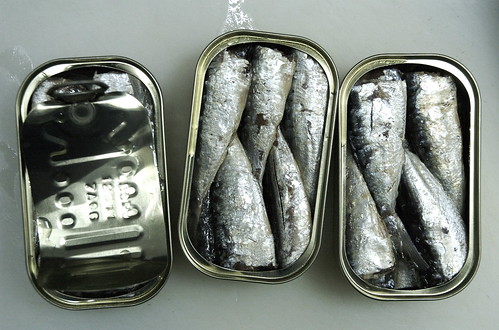Metaphors, Stories And Images Are Important For Conferences: The I In EPIC Conferences
Try this.
Next time you are in the grocery store, ask the seafood clerk for fresh sardines.
Guess what most seafood clerks say? “There is not really one fish called a sardine.”
Most of us are used to seeing sardines in a can. In reality, the name applies to twenty-one species of small fish that, they moment they hit the can, can be labeled sardines. FishBase, an online database of fish, lists 18 fish species that qualify as sardines and many more that are described as sardines.
The name, or metaphor, for sardine is actually a way to help us understand the complexity of twenty-one types of trash fish jammed into a can.
The Metaphor As A Tool
The 20th century was word-based. People used reasoning and intellect to try to persuade others. Words ruled.
Metaphors and stories were considered too fuzzy, too illogical and too emotional. We forfeited the role of the storyteller to news-magazine TV shows and tabloid magazines.
Yet, story and metaphor are the heart of our soul and minds. Images and stories generate emotions. People respond to metaphors, stories and images with their feelings.
The 21st Century is focused on images, metaphors and storytelling. Images are the closest thing we’ll ever have to a universal language. Metaphors often cross mental boundaries.
Theorists and futurist Buckminster Fuller said, “If you want people to think differently, don’t tell them how to think. Give them a tool.”
The best tool you can give your conference participants so they think and live differently is a metaphor or image.
Get The Picture?
Our culture is a system of symbols. We live in a world driven by images, metaphors, symbols and stories.
What holds your conference together? The metaphors it offers to the attendees. The symbols it displays for the attendees’ industry or profession. The stories it shares.
Our metaphors lodge truth in the imagination. People can pick up the metaphor and make it their own.
Our conferences no longer have an option to avoid visual language. We have transitioned from print-saturated, word-based as visual technologies have created a new visual culture.
Our minds think in pictures. 80% of our brain processing power is devoted to processing images. We think in images, not words. We are all visual learners!
Don’t believe me? When you dream, do you dream in words or pictures? We dream in images.
Our human mind thrives on metaphors. We use metaphors to define and create reality. They are composed of both thought and action.
Your Conference’s Imaginal Cells
Your conference has the potential to act as imaginal cells.
Imaginal cells help a caterpillar transform into a butterfly. The metamorphosis begins when the imaginal cells start forming in the caterpillar. They are the building blocks of the new organism, the butterfly, that grow among and in between the old cells.
As the imaginal cells prosper and emerge organically, the tissues of the old cells dissolve and disappear. What remains is the butterfly.
The conference experience you design has the potential to act as imaginal cells in your participants. As you use images, metaphors and storytelling to help them move forward and grow, a metamorphosis can occur.
We have to create a web of shared meaning for our participants. One where they can unite around values that use metaphors to guide the profession into the future.
Our conferences must become more image-driven. They must invite and engage the I in EPIC Conference experiences.
Read more:
- Creating EPIC Conferences
- Conferences Need To Focus On Creating Experiences, The E In EPIC
- Creating Participatory Conferences, The P In EPIC
What is keeping your conference from flourishing in today’s world of images and storytelling that connect with culture? What images are already imprinted in the human soul that conferences could leverage?


